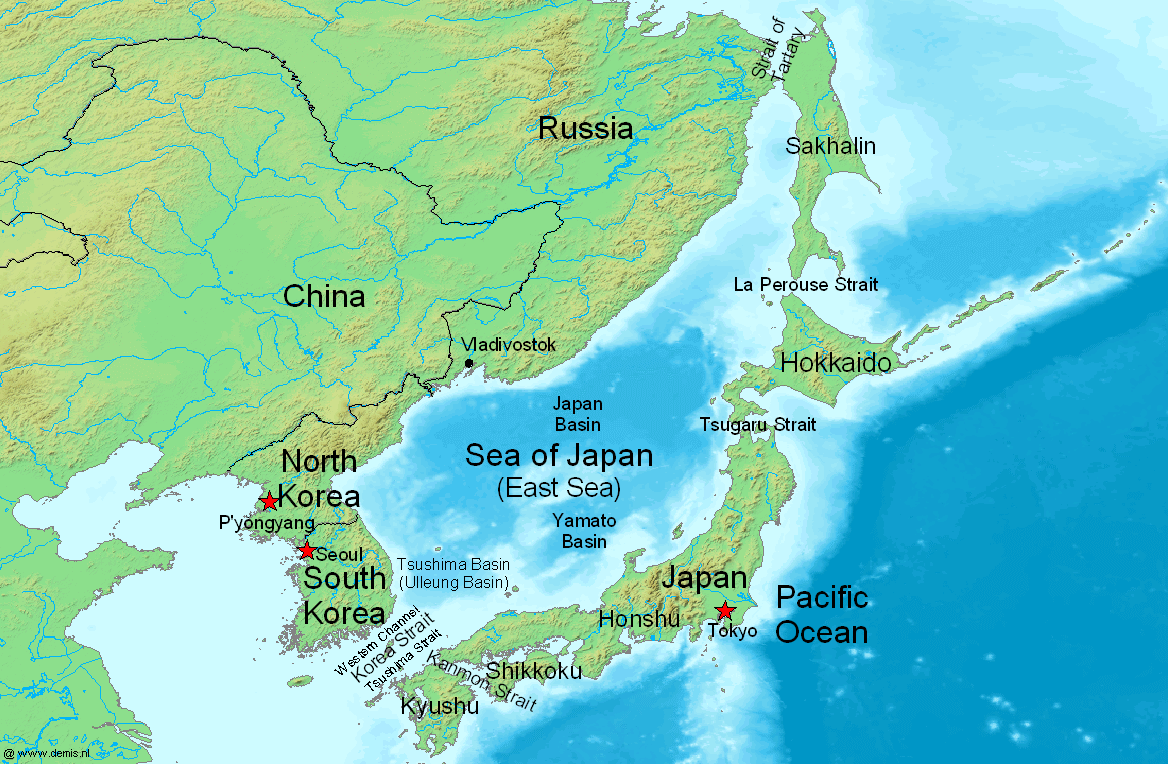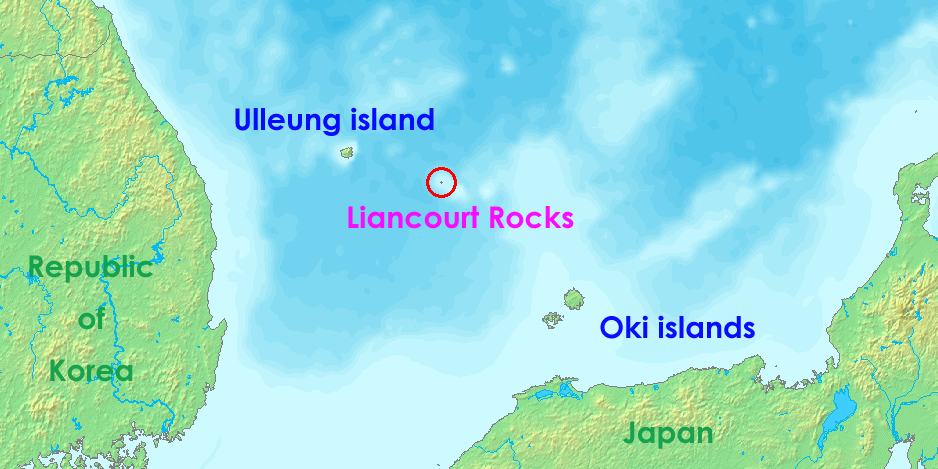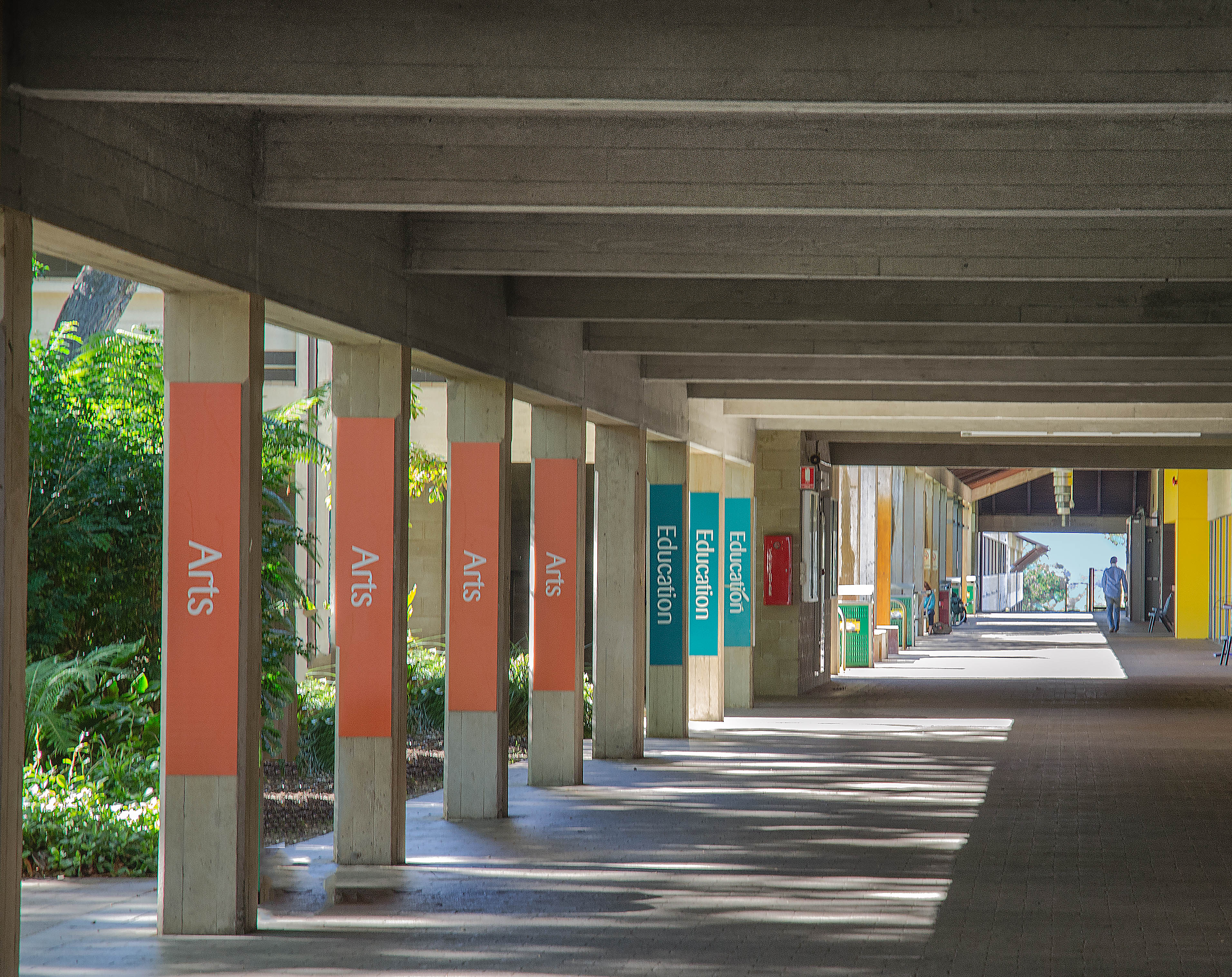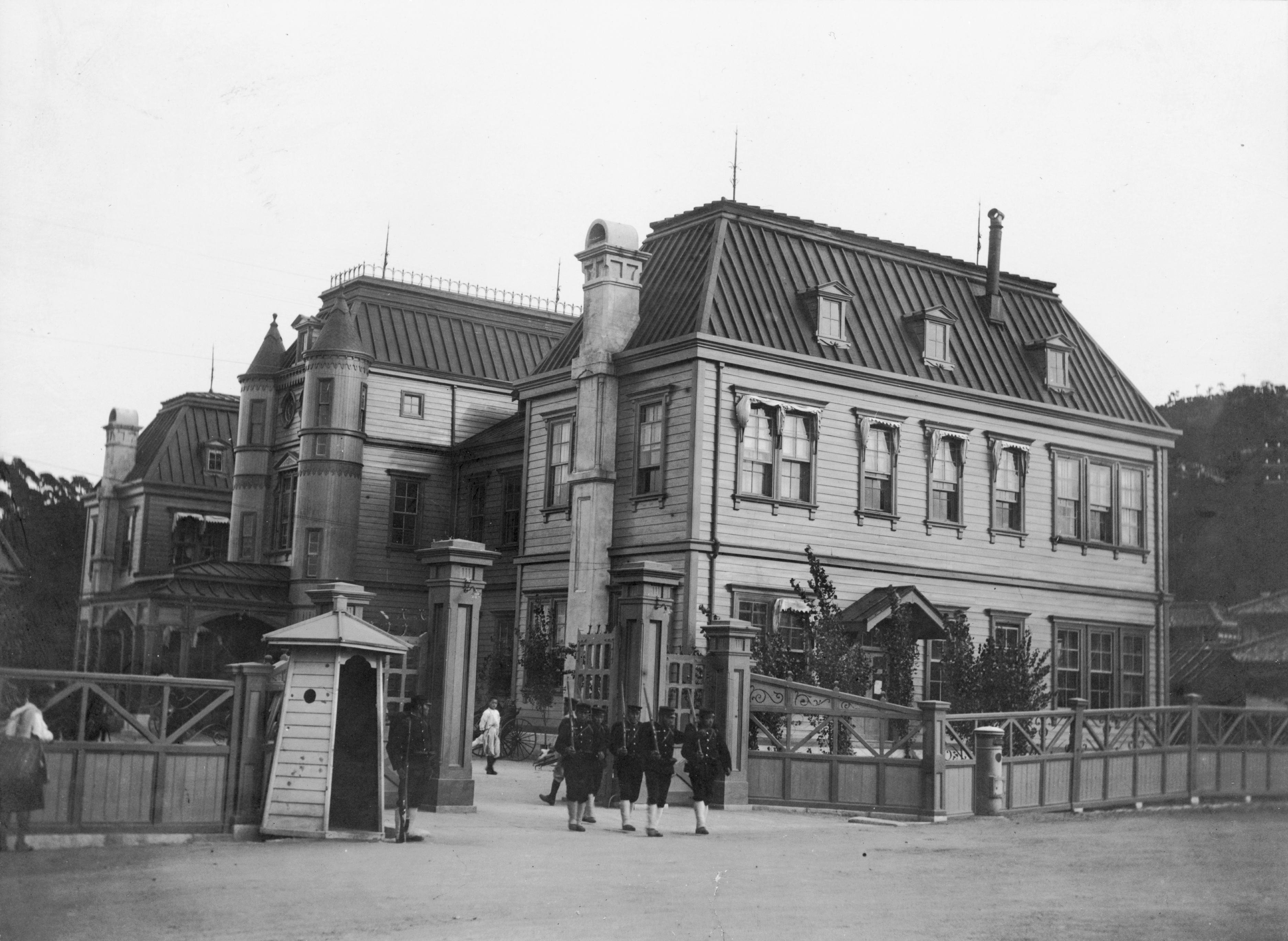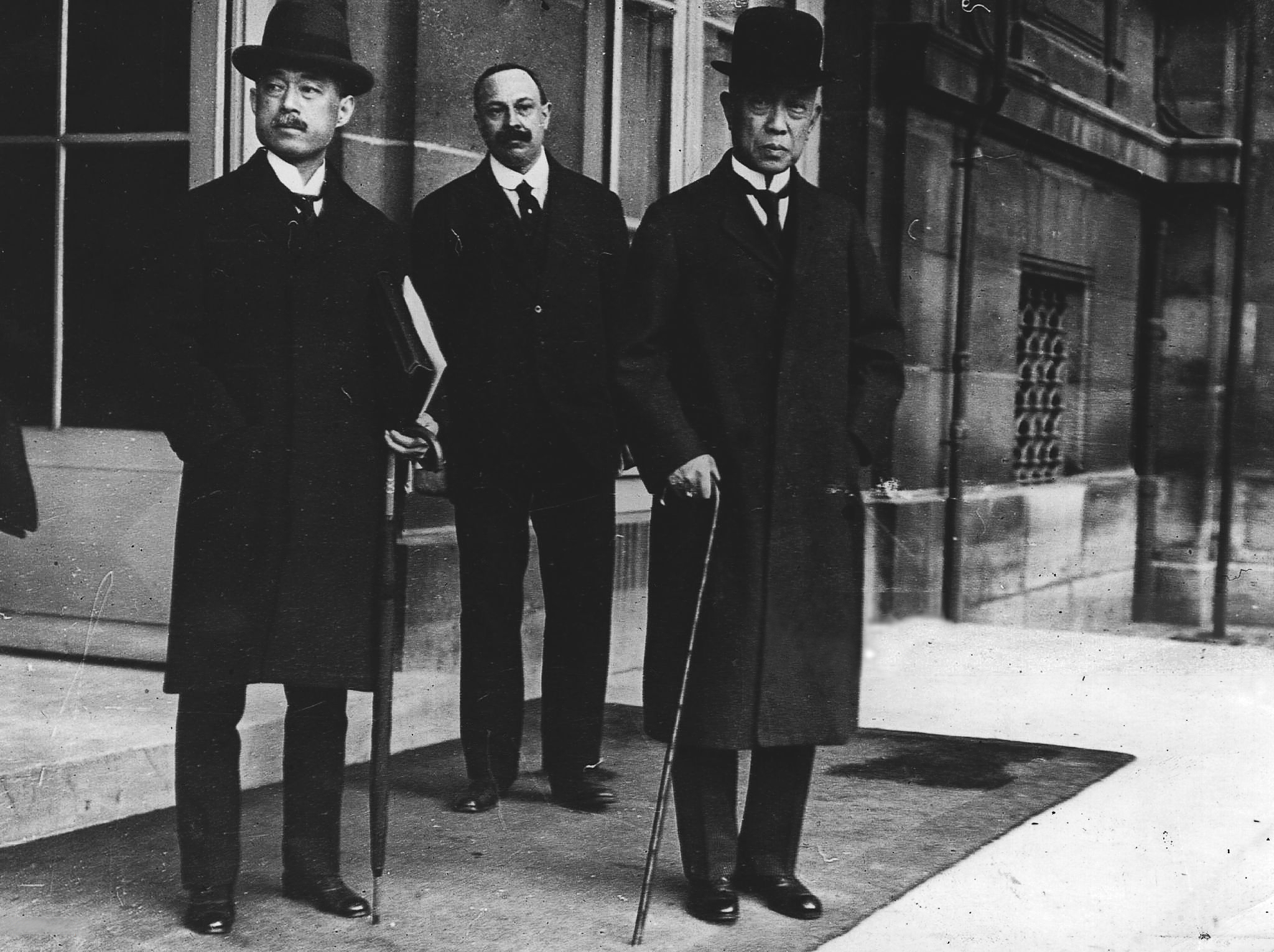|
Japan–Korea Disputes
Korea and Japan had a long history between each other as immediate neighbors and at the start of the 20th century Korea was ruled by the Imperial Japanese government starting with the Japan–Korea Treaty of 1910. South Korea and North Korea both obtained independence with the Japanese Instrument of Surrender in 1945 which ended World War II. Relations between Japan and South Korea began with the signing of the Basic Treaty which normalized relations between the two nations, after which economic links expanded dramatically. Today, Japan and South Korea are major trading partners, and many students, tourists, entertainers, and business people travel between the two countries. Despite strong economic cooperation between the two countries, ongoing territorial and historical issues exist between the two nations. Relations between Japan and North Korea are not yet normalized, and there are ongoing historical, geopolitical and nuclear issues between the two nations. Background ... [...More Info...] [...Related Items...] OR: [Wikipedia] [Google] [Baidu] |
Liancourt Rocks Dispute
The Liancourt Rocks dispute is a territorial dispute between South Korea and Japan. Both countries claim sovereignty over the Liancourt Rocks, a group of small islets in the Sea of Japan which are referred to as "Dokdo" () in Korean and in Japanese. North Korea also Exclusive mandate, claims sovereignty of the islands. The Liancourt Rocks have been administered by South Korea since 1952 by the Korea Coast Guard. This action was taken after the United States stated in the Rusk documents that the Japanese claim to the Liancourt Rocks would not be renounced in Japan's Treaty of San Francisco, post-World-War-II peace treaty. In 1954, Japan proposed a reference to the International Court of Justice, which South Korea rejected, believing that the Liancourt Rocks are irrefutably South Korean territories, and thus should not be dealt through diplomatic negotiations or judicial settlement between South Korea and Japan. There are conflicting interpretations about the historical state of ... [...More Info...] [...Related Items...] OR: [Wikipedia] [Google] [Baidu] |
Korean Empire
The Korean Empire () was a Korean monarchical state proclaimed in October 1897 by Emperor Gojong of the Joseon dynasty. The empire stood until Japan's annexation of Korea in August 1910. During the Korean Empire, Emperor Gojong oversaw the Gwangmu Reform, a partial modernization and westernization of Korea's military, economy, land system, education system, and of various industries. In 1905, the Korean Empire became a protectorate of the Empire of Japan. After the Japanese annexation in 1910, the Korean Empire was abolished. History Formation Following the Japanese victory in the First Sino-Japanese War, Joseon won independence from the Qing dynasty. Proclaiming an empire was seen by many politicians as a good way to maintain independence. At the request of many officials, Gojong of Korea proclaimed the Korean Empire. In 1897, Gojong was crowned in Hwangudan. Gojong named the new empire ''Dahan'' and changed the regnal year to ''Gwangmu'', with 1897 being the first year ... [...More Info...] [...Related Items...] OR: [Wikipedia] [Google] [Baidu] |
North Korea
North Korea, officially the Democratic People's Republic of Korea (DPRK), is a country in East Asia. It constitutes the northern half of the Korea, Korean Peninsula and shares borders with China and Russia to the north, at the Yalu River, Yalu (Amnok) and Tumen River, Tumen rivers, and South Korea to the south at the Korean Demilitarized Zone. North Korea's border with South Korea is a disputed border as both countries claim the entirety of the Korean Peninsula. The country's western border is formed by the Yellow Sea, while its eastern border is defined by the Sea of Japan. North Korea, like South Korea, its southern counterpart, claims to be the legitimate government of the entire peninsula and List of islands of North Korea, adjacent islands. Pyongyang is the capital and largest city. In 1910, Korean Empire, Korea was Korea under Japanese rule, annexed by the Empire of Japan. In 1945, after the Surrender of Japan, Japanese surrender at the End of World War II in Asia, end ... [...More Info...] [...Related Items...] OR: [Wikipedia] [Google] [Baidu] |
Koreans In China
Koreans in China (), Korean Chinese (), Joseonjok, Chosŏnjok (), or Chaoxianzu (), are Chinese by nationality and are Koreans by ethnicity (with either full or partial Korean ancestry). A majority of the chaoxianzu are descendants of immigrants from Korean peninsula from recent immigration. The Chinese government officially recognize them as one of the 56 ethnicities being part of the 55 ethnic minorities in China. They are the 13th largest minority group in China. Their total population was estimated at 1,923,842 and 1,830,929 according to the 2010 Chinese census. High levels of emigration to the Republic of Korea for better economic and financial opportunities, which has conversely reported a large increase of Korean Chinese in Korea, are the likely cause of the drop in China. Most of them live in South Korea and Yanbian Korean Autonomous Prefecture. They are also located in Heilongjiang, Liaoning, and Inner Mongolia Autonomous Region. The population of Koreans in China in ... [...More Info...] [...Related Items...] OR: [Wikipedia] [Google] [Baidu] |
Korean Independence Movement
The Korean independence movement was a military and diplomatic campaign to achieve the independence of Korea from Japan. After the Japanese annexation of Korea in 1910, Korea's domestic resistance peaked in the March 1st Movement of 1919, which was crushed and sent Korean leaders to flee into China. In China, Korean independence activists built ties with the National Government of the Republic of China which supported the Provisional Government of the Republic of Korea (KPG), as a government in exile. At the same time, the Korean Liberation Army, which operated under the Chinese National Military Council and then the KPG, led attacks against Japan. After the outbreak of the Pacific War in 1941, China became one of the Allies of World War II. In the Second Sino-Japanese War, China attempted to use this influence to assert Allied recognition of the KPG. However, the United States was skeptical of Korean unity and readiness for independence, preferring an international trusteeshi ... [...More Info...] [...Related Items...] OR: [Wikipedia] [Google] [Baidu] |
Kim Il-sung
Kim Il-sung (; , ; born Kim Song-ju, ; 15 April 1912 – 8 July 1994) was a North Korean politician and the founder of North Korea, which he ruled from the country's establishment in 1948 until his death in 1994. He held the posts of Premier from 1948 to 1972 and President from 1972 to 1994. He was the leader of the Workers' Party of Korea (WPK) from 1949 to 1994 (titled as Chairman from 1949 to 1966 and as General Secretary after 1966). Coming to power after the end of Japanese rule in 1945, he authorized the invasion of South Korea in 1950, triggering an intervention in defense of South Korea by the United Nations led by the United States. Following the military stalemate in the Korean War, a ceasefire was signed on 27 July 1953. He was the third longest-serving non-royal head of state/government in the 20th century, in office for more than 45 years. Under his leadership, North Korea was established as a socialist state with a centrally planned economy. It had c ... [...More Info...] [...Related Items...] OR: [Wikipedia] [Google] [Baidu] |
Murdoch University
Murdoch University is a public university in Perth, Western Australia, with campuses also in Singapore and Dubai. It began operations as the state's second university on 25 July 1973, and accepted its first undergraduate students in 1975. Its name is taken from Sir Walter Murdoch (1874–1970), the Founding Professor of English and former Chancellor of the University of Western Australia. Murdoch is a verdant university and a member of the Innovative Research Universities. In 2018, Murdoch University was recognised as producing the most employable graduates of all Australian universities after 3 years of graduating from their courses. In 2019, the university ranked third in overall student satisfaction amongst all public universities in Western Australia. History In 1962, the Government of Western Australia earmarked an area of land in Bull Creek to be the site of a future, second, state university. Integral to the planning of the creation of Western Australia's second univ ... [...More Info...] [...Related Items...] OR: [Wikipedia] [Google] [Baidu] |
Gojong Of Korea
Gojong (; 8 September 1852 – 21 January 1919) was the monarch of Korea from 1864 to 1907. He reigned as the last King of Joseon from 1864 to 1897, and as the first Emperor of Korea from 1897 until his forced abdication in 1907. He is known posthumously as the Emperor Gwangmu (). He was instrumental in the forced signing of the Treaty of Ganghwa (1876), an unequal treaty which would eventually pave the way for Japanese annexation of Korea. In 1895, his wife Queen Min was assassinated by Japanese agents, strengthening the king's antipathy towards the Japanese. Gojong declared Korea an empire in 1897, which ended the country's historic subordination to the Qing dynasty. His slow pace in issuing reforms led to conflict with the Independence Club, but he saw more success when carrying out the Gwangmu Reform along military, economic and educational lines. Later, Gojong was subjected to several assassination and abdication attempts; eventually forced to abdicate, he was confined in ... [...More Info...] [...Related Items...] OR: [Wikipedia] [Google] [Baidu] |
Resident-General Of Korea
The Japanese resident-general of Korea ( ja, 韓国統監, Kankokutōkan; ko, 일본의 대 한국통감, Ilbon-ui dae hangugtong-gam) was the leader of Korea under Japanese rule from 1905 to 1910. This post was highly hated among native Koreans, and international opinion regarded it as nothing more than an imperial sanction to ward off the imperial interests of China, Russia, and the Western Powers (collectively: Britain, France, and the United States). List of Japanese residents-general See also * Governor-General of Korea * Governor-General of Taiwan The governor-general of Taiwan ( ja, 臺灣總督, Taiwan Sōtoku) was the head of the Government-General of Taiwan in the Japanese era (including Formosa and the Pescadores) when they were part of the Empire of Japan, from 1895 to 1945. The ... References {{Japan-hist-stub ... [...More Info...] [...Related Items...] OR: [Wikipedia] [Google] [Baidu] |
Genrō
was an unofficial designation given to certain retired elder Japanese statesmen who served as informal extraconstitutional advisors to the emperor, during the Meiji, Taishō, and Shōwa eras in Japanese history. The institution of ''genrō'' originated with the traditional council of elders (''Rōjū'') common in the Edo period; however, the term ''genrō'' appears to have been coined by a newspaper only in 1892. The term is sometimes confused with the ''Genrōin'' (Chamber of Elders), a legislative body which existed from 1875–1890; however, the ''genrō'' were not related to the establishment of that body or its dissolution. Experienced leaders of the Meiji Restoration were singled out by the Emperor as ''genkun'', and asked to act as Imperial advisors. With the exception of Saionji Kinmochi, all the ''genrō'' were from medium or lower ranking ''samurai'' families, four each from Satsuma and Chōshū, the two former domains that had been instrumental in the overthrow o ... [...More Info...] [...Related Items...] OR: [Wikipedia] [Google] [Baidu] |
Itō Hirobumi
was a Japanese politician and statesman who served as the first Prime Minister of Japan. He was also a leading member of the ''genrō'', a group of senior statesmen that dictated Japanese policy during the Meiji era. A London-educated samurai of the Chōshū Domain and a central figure in the Meiji Restoration, Itō Hirobumi chaired the bureau which drafted the Constitution for the newly formed Empire of Japan. Looking to the West for inspiration, Itō rejected the United States Constitution as too liberal and the Spanish Restoration as too despotic. Instead, he drew on British and German models, particularly the Prussian Constitution of 1850. Dissatisfied with Christianity's pervasiveness in European legal precedent, he replaced such religious references with those rooted in the more traditionally Japanese concept of a ''kokutai'' or "national polity" which hence became the constitutional justification for imperial authority. During the 1880s, Itō emerged as the most p ... [...More Info...] [...Related Items...] OR: [Wikipedia] [Google] [Baidu] |
